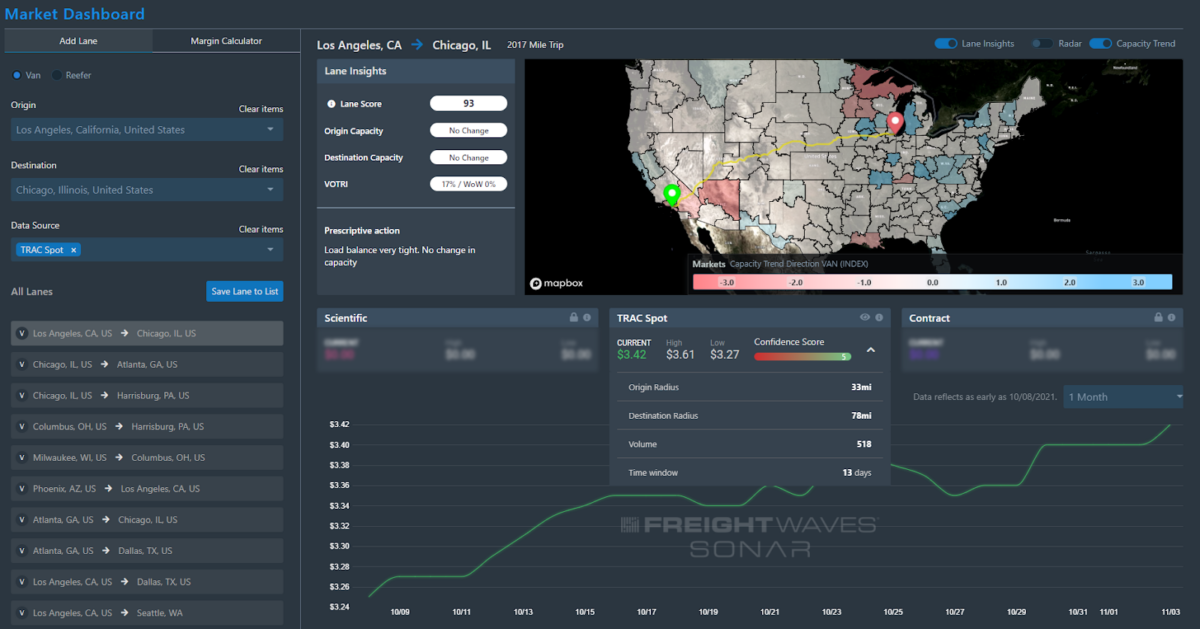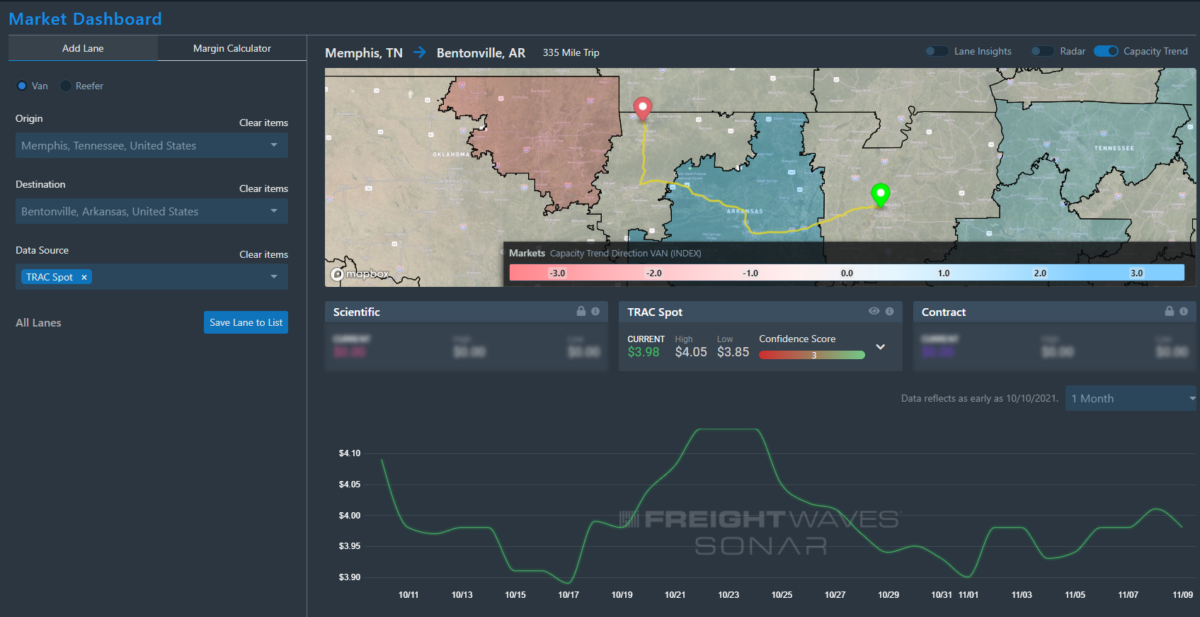Hot Takes

TRAC us out! Yeah … that was a bad pun. Moving on. FreightWaves has formed the Trusted Rate Assessment Consortium (TRAC), which provides the freshest view of spot rates in the U.S. Fresh rates PLUS SONAR data. I mean, what else could you want?
TRAC is a little different from other spot rate measurements in several ways:
- Data is collected at the time a load is covered or accepted by the carrier.
- There are a minimum of five contributors with no single contributor accounting for more than 25% of the contributing loads in each lane.
- Rates are to the carrier (buy) and will be updated at 8 a.m. ET daily.
- All-in spot rate market data is provided for over 650,000 unique van and 300,000 unique reefer lanes.
- Rates are weighted based on distance and time to value the more recent loads that are closer to the precise O/D pair the user specifies.
“Working alongside dozens of spot market participants, FreightWaves has created the freshest and most relevant set of data in the trucking spot market, eliminating much of the mystery inside of most trucking spot rate index products,” said Crag Fuller, founder and CEO of FreightWaves.
Not only does TRAC give you an accurate snapshot of rates, it also has a margin calculator that allows you to get the most accurate spot rate and add your own margin. There are also the various map indices that show how certain areas are doing.
Rates aren’t the only thing that measures a lane but they’re the most relatable, and when you’re up against the wall in an unfamiliar market, getting the maximum amount of data is crucial. Time is money and you gotta strike while the iron’s hot.
Quick Hit

“Hey man, I got a great idea.” There’s a 70% chance of the next sentence in fact not being a great idea. The other 30% of the time, it’s something actionable and leaves you going, “Hmmm, that could be a good idea.”
For example, high-volume, low-margin loads. No one particularly likes getting one load from the shipper where the margin stands to be about $60-$100. Rates like that typically barely hit the breakeven point you need and are deemed not worth the time. However, if you have massive volumes from this shipper at $60-$100, you could make thousands, if not tens of thousands on this, even though it isn’t within the company policy, because the per-load margin is too low.
I know some of the larger brokerages have policies that don’t allow you to do something like this, or you have to jump through half a dozen approval hoops to pitch the idea. Smaller companies might actually listen and thrive in a situation like this, if they’re OK with the risk. The key when someone “has a great idea” and comes with a solid presentation, backed with numbers, is just to listen. It might make you some extra money, do a solid for your customer and add some zeros to that revenue column.
Market Check

Let’s take a trip from Memphis, Tennessee, to Bentonville, Arkansas. That’s going to be an all-in rate of roughly $4 per mile with moderate confidence. Memphis has significantly tightened on its capacity. Rejection rates are higher, and headhaul scores have also climbed, making it a more costly market to get out of but great if you have loads going into Memphis.
How’d the lemonade stand do?

Air Canada has officially put the pandemic in the rearview mirror. Its Q3 earnings recorded $291 million in revenue from cargo operations. While still trailing American Airlines and United, Air Canada beat Delta. Traffic increased 59.3%, with a total of 7,720 cargo-only flights in Q3. It has mostly relied heavily on using the passenger aircraft as dedicated freighters.
Air Transport Services Group achieved record revenue of $81.2 million (pretax). It has credited the e-commerce demand as the reason for its current success. Earnings before interest, taxes, depreciation and amortization is expected to come in around $535 million, prompting management at ATSG to raise the full-year outlook. The company is converting four Boeing 767-300s domestically to speed up the conversion process to get more capacity in the network.







